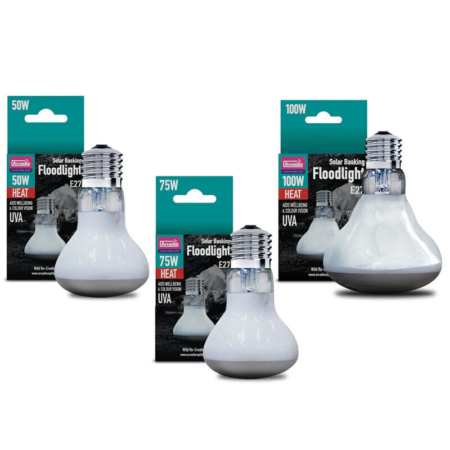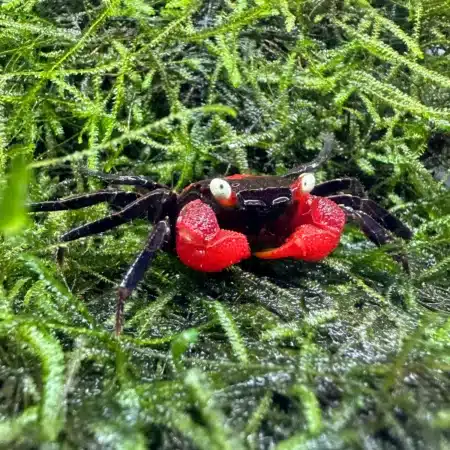Blue Rili Shrimp – Neocaridina Davidi – Aquatic Invertebrate – Crustacean
£11.61
The Blue Rili Shrimp, scientifically known as Neocaridina Davidi, is a stunning aquatic invertebrate that adds a vibrant touch to any aquarium. With its unique blue and white coloration, this shrimp is a popular choice among aquarists. It is easy to care for, making it suitable for both beginners and experienced hobbyists. Our 24-hour courier service ensures your fish arrive safely with poly boxes and heat packs during colder months. Combine multiple items in one order to streamline shipping. Should any fish arrive deceased, promptly inform us with photographic evidence, and we will refund you or send you a replacement.
1001 in stock
Product: Blue Rili Shrimp – Neocaridina Davidi – Aquatic Invertebrate – Crustacean
Short Description:
The Blue Rili Shrimp, scientifically known as Neocaridina Davidi, is a stunning aquatic invertebrate that adds a vibrant touch to any aquarium. With its unique blue and white coloration, this shrimp is a popular choice among aquarists. It is easy to care for, making it suitable for both beginners and experienced hobbyists.
Product Categories: Shrimp, Fish
Secure Transit:
Our 24-hour courier service ensures your fish arrive safely with poly boxes and heat packs during colder months.
Shipping Convenience:
Combine multiple items in one order to streamline shipping.
Dead on Arrival (DOA) Policy:
Should any fish arrive deceased, promptly inform us with photographic evidence, and we will refund you or send you a replacement.
Product Description:
Scientific and Common Names:
The Blue Rili Shrimp belongs to the species Neocaridina Davidi. It is commonly referred to as Blue Rili Shrimp due to its striking blue and white coloration.
Habitat:
Blue Rili Shrimp are native to Taiwan and are typically found in freshwater rivers, streams, and ponds. They prefer areas with dense vegetation and ample hiding spots.
Tank Setup:
To provide a suitable habitat for Blue Rili Shrimp, a well-established aquarium with a capacity of at least 5 gallons is recommended. The tank should be equipped with a sponge filter or a gentle air-driven filter to prevent the shrimp from being sucked in. Live plants, driftwood, and rocks can be added to create hiding places and mimic their natural environment.
Diet and Nutrition:
Blue Rili Shrimp are omnivorous and will readily consume a variety of foods. Their diet should consist of high-quality shrimp pellets, algae wafers, blanched vegetables (such as spinach or zucchini), and occasional protein-rich treats like brine shrimp or bloodworms. It is important to provide a balanced diet to ensure their overall health and vibrant coloration.
Size and Growth Rate:
Blue Rili Shrimp typically reach a size of around 1 inch (2.5 cm) when fully grown. They have a moderate growth rate and can take several months to reach their adult size.
Behavioral Traits:
Blue Rili Shrimp are peaceful and social creatures that thrive in a community aquarium. They are known for their active nature and can often be seen foraging for food or exploring their surroundings. These shrimp are also excellent algae eaters and can help maintain a clean and balanced aquarium ecosystem.
Care Level:
Blue Rili Shrimp are relatively easy to care for, making them suitable for beginners. They are hardy and adaptable to a wide range of water conditions, but proper maintenance of water parameters is still necessary for their well-being.
Breeding and Reproduction:
Blue Rili Shrimp are prolific breeders and can reproduce readily in a suitable environment. Females carry eggs under their abdomen until they hatch into miniature shrimplets. Providing ample hiding places, such as moss or dense vegetation, will increase the survival rate of the shrimplets.
Health and Disease Prevention:
Maintaining good water quality is crucial for the health of Blue Rili Shrimp. Regular water changes, proper filtration, and avoiding overfeeding are essential. It is also recommended to quarantine new shrimp before introducing them to an established aquarium to prevent the spread of diseases.
Optimal Water Conditions:
– Temperature: 68°F – 78°F (20°C – 25°C)
– pH: 6.5 – 7.5
– Ammonia, Nitrite, and Nitrate levels should be kept at zero or very low levels.
– Hardness: 6 – 10 dGH
Lifespan:
Under optimal conditions, Blue Rili Shrimp can live for approximately 1 to 2 years. However, with proper care and a suitable environment, some individuals have been known to live longer.
Additional Interesting Facts:
– Blue Rili Shrimp are a selectively bred variant of the popular Red Cherry Shrimp.
– Their vibrant blue and white coloration is caused by a genetic mutation.
– These shrimp are excellent scavengers and will help keep the aquarium clean by consuming leftover food and algae.
– Blue Rili Shrimp are peaceful and can be kept with other non-aggressive fish and invertebrates.
– They are a popular choice for planted aquariums as they do not uproot or damage plants.














Reviews
There are no reviews yet.